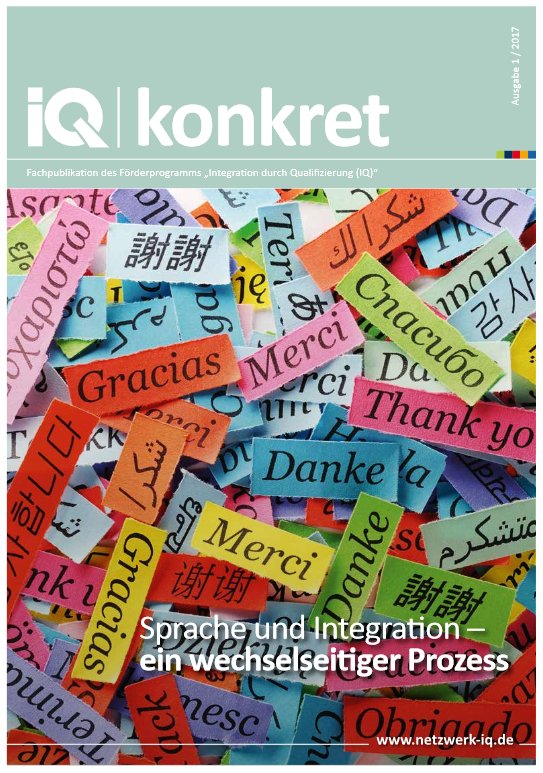고정 헤더 영역
상세 컨텐츠
본문
IntroductionThe report is critically based on evaluating the logistics and operations management in John Lewis partnership. It is the most popular brand name in UK, which is dominating the retail market of UK. The report states four of the processes of the operations strategy such as formulation, implementation, monitoring and control of operations strategy. Various competitive strategies of the selected organization are analyzed using those operations strategies. Operations management contributions are detailed to improve in organization’s strategies.
Finally, recommendations are provided to make improvement in the four operation strategies used in the selected organization. Analysis the business operations and market position of John Lewis Partnership in the business area Background of the companyJohn Lewis Partnership (JLP) is a UK based company, which is operating John Lewis departmental stores, banking, services of finance, Waitrose supermarkets and retail services. JLP group is the third largest UK based private company. The products of JLP are clothing, cosmetics, watches, jewelers, house wares, audio visual, furniture, direct services, computing and financial services (Johnlewispartnership.co.uk, 2015). The first John Lewis store was opened in the year 1864 in Oxford Street, London.Figure 1: John Lewis Partnership(Source: Johnlewispartnership.co.uk, 2015) Business SituationJohn Lewis Partnership has 91,500 partnerships own the leading retail business in UK.
The business has annual gross sales of over £11bn. After beating Marks & Spencer in the year 2010, JLP has a distinction of being one of the best high street website in UK. John Lewis focuses to improve its operational strategies towards their all varieties of buyers, introduction of value range to John Lewis and expansion of business services (Johnlewispartnership.co.uk, 2014).
The JLP supplies Ocado web supermarket with the Waitrose own band foods as well as John Lewis own brand non-food items. History of John Lewis PartnershipIn the year 1864, John Lewis opened a drapery shop, John Lewis Department in Oxford Street, London.
The son of John Lewis, John Spedan Lewis has acquired a quarter shares holding in the John Lewis departmental store. John Lewis hands control over the Peter Jones in the year 1905. However, in the year 1928, due to death of John Lewis, his son became the owner of the stores (johnlewispartnership.co.uk, 2015).
The current position of this JLP is that it is one of the ten UK retailers with 46 John Lewis shops, over 300 Waitrose supermarkets and online businesses. Market Position of John Lewis Partnership Market ShareJLP achieves a sales growth as well as market share gains in their fashion, electrical and home technology.

The company’s online sales growth is 17%. The following table shows JLP market share as below:FactorsValuesAverage Volume100.00 DollarShares Outstanding612.00kFree Float499.4kMarket Cap734.40kAnnual Div6.48%Table 1: Market Share of John Lewis Partnership(Source: johnlewispartnership.co.uk, 2015) Core CompetenciesCapabilities: The Employee Ownership policy is the core capability of John Lewis. The organization provides the employees the right to highlight their issues to the higher authority of the organization without any restriction. This aspect makes their employee more satisfied and increase the productivity of the organization.Core Competencies: Waitrose and Mark Spencer are the core competitors of John Lewis.
Analyzing the competitive business strategies of John Lewis PartnershipThe following are the business competitive strategies for John Lewis Partnership to increase their competitive advantage in the retail marketplace as follows:Cost Leadership: JLP adopts the cost leadership business strategy in their retail business operations to become the lowest cost production company. Two of the options are adopted to improve their profitability such as increasing or decreasing the cost (Christopher, Magrill and Wills, 2013). JLP focuses to acquire products and services of highest quality with lowest cost.
JLP makes a promise “Never knowingly undersold” that spots that their product is sold more cheaply, the retailer will match the cost.Product and Service Differentiation: JLP offers branded products to the customers from the leading suppliers as well as own brand merchandise. On all the electrical items, they are giving two years guarantee. The John Lewis membership card helps the customers to give rewards as well as surprise threats (Coyle et al. The partnership card credit permits the customers in order to obtain points when they spend with the clients to receive points that are changed into vouchers.Price Strategy: The lower the cost of products, it leads to increase in market share. The revenue of the retailers rose 1.9% with sales rising of 3% for John Lewis as 17.1% of an increase in online sales (Johnlewispartnership.co.uk, 2015).
Using their company’s slogan “Never knowingly undersold”, the company compels pricing strategies of lowering the price John Lewis could offer (the Guardian, 2015). It was one of mover retailer offers their customers the confidence that promised the customer’s cheapest price in the town. It also allows partnership to retain loyalty of customers as well as trust by giving them promise (Gilmour, 2013).
The promise is that they will never purchase the similar product elsewhere that is undersold. In any case, if the products are similar, then the customer is guaranteed to get refund. Contribution of the operation management to improve organization strategyCaunhye, Nie and Pokharel (2012) stated that the improvement strategy consists of selection criteria to focus on significant improvement initiatives, deployment of the resources and change management to high impact opportunities. Dekker, Bloemhof and Mallidis (2012) argued that the improvement strategy not only achieves the goal to boost the bottom line of business, but also the reason of involvement of customers in process improvement of the business operations. There may be several options available for controlling the operation strategies of John Lewis. These are:Supply Chain Management: John Lewis should focus on supply chain managing system for getting more growth opportunities in the competitive market (Rushton, Croucher and Baker, 2014). JLP aligns the supply chain with the business objectives by connecting the transactions as well as processes planning.
John Lewis Partnership Ventures
The company also optimizes product design for their supply chain management.Control of Quality: John Lewis recently adopts Quality measures for better service providence for meeting their customer demands properly. They are provided with attractive presentation of site and introduction of new options for better search (Fernie and Sparks, 2014).Improvisation in R&D department: John Lewis has improvised their R&D team for achieving better performance, which have incremented their sale by 20% (Johnlewispartnership.co.uk, 2015). Such as, they are utilizing high quality database system for handling the customer data in way that is more effective. Conclusion and RecommendationsConclusionIt is concluded that John Lewis Partnership is the most popular retail company in UK, their mission to satisfy their customer by providing good quality of products and services. John Lewis provides happiness to all of their consumers with worthwhile products and satisfactory employment in a successful business. It also maintains an employee ownership strategy.
The organization focuses on three of the competitive business strategies such as cost leadership, product differentiation and pricing strategies. It helps the organization to achieve a high market share as compared to their competitors.RecommendationsDevelopment and Training Program: John Lewis should develop more innovative training programs for the improvement of their employees so that they can knowledge about how to sell their products and clarify the queries of the customers.Incentives: Incentives will create more motivational aspect among the employees, which will increase the profit of John Lewis.Technological Development: John Lewis should use more technologically advanced procedures for achieving brand value in the market.
The website of JLP is developed so that the customers can get more information about their service and products. ReferencesBozarth, C.B. And Handfield, R.B. (2016). Introduction to operations and supply chain management.Pearson Higher Ed.Caunhye, A.M., Nie, X.
And Pokharel, S. Optimization models in emergency logistics: A literature review. Socio-economic planning sciences,46(1), pp.4-13.Christopher, M. (2016). Logistics & supply chain management. Pearson Higher Ed, pp- 100-700.Christopher, M., Magrill, L. And Wills, G. (2013).Educational development for marketing logistics. International Journal of Physical Distribution & Logistics Management.Coyle, J.J., Langley, C.J., Novack, R.A.
And Gibson, B. (2016). Supply chain management: a logistics perspective. Nelson Education.Dekker, R., Bloemhof, J. And Mallidis, I. Operations Research for green logistics–An overview of aspects, issues, contributions and challenges. European Journal of Operational Research, 219(3), pp.671-679.Dyckhoff, H., Lackes, R.
And Reese, J. (2013). Supply chain management and reverse logistics.
Springer Science & Business Media.Fernie, J. And Sparks, L. (2014). Logistics and retail management: emerging issues and new challenges in the retail supply chain. Kogan Page Publishers.Fitzsimmons, J. And Fitzsimmons, M.
(2013). Service management: Operations, strategy, information technology. McGraw-Hill Higher Education.Gilmour, P. Benchmarking supply chain operations. International Journal of Physical Distribution & Logistics Management.Jacobs, R. And Chase, R.

(2013) Operations and supply chain management. McGraw-Hill Higher Education.Johnlewispartnership.co, (2016). John Lewis Partnership - Home. online Johnlewispartnership.co.uk. Available at: Accessed 7Aug. 2016.Johnlewispartnership.co.uk, (2014). In the hands of our Partners. online JOHN LEWIS PARTNERSHIP PLC SUSTAINABILITY REVIEW.
Available at: Accessed 7 Aug. 2016.johnlewispartnership.co.uk, (2015). Annual Report of John Lewis Partnership plc. online www. Available at: Accessed 7 Aug.
2016.Rushton, A., Croucher, P. And Baker, P.
(2014). The handbook of logistics and distribution management: Understanding the supply chain. Kogan Page Publishers.Schonsleben, P. (2016). Integral logistics management: Operations and supply chain management within and across companies.
CRC Press.Stadtler, H. Supply chain management: An overview. In Supply chain management and advanced planning (pp. Springer Berlin Heidelbergthe Guardian, (2015). John Lewis profits fall as costs and competition increase. online the Guardian. Available at: Accessed 7 Aug. At MyAssignmenthelp.com, we understand that when students get stuck with tough assignments, they look for affordable services.
To assist students with complex assignments, we have built a team of skilled. MyAssignmenthelp.com has become one stop solution for all students who often look for answers related to their search similar to rate or who can at affordable prices. Students prefer hiring us as we have the best provisions to render services related to at a reasonable rate.
Most Downloaded Sample.




